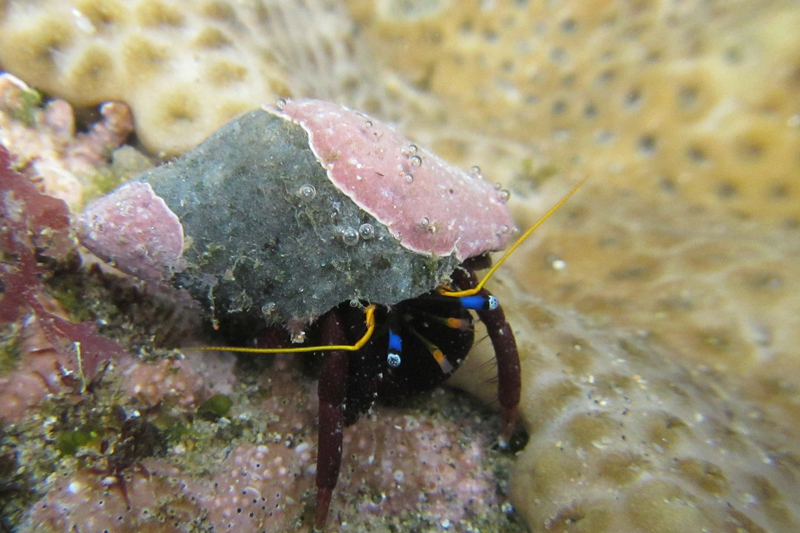‘Right Handed’ Hermit Crabs
Did you know that the main difference between hermit crabs and their ‘real crab’ cousins is their pincers? Some species of crabs have roughly equally sized pincers which makes them ambidextrous.
In the case of hermit crabs, their right pincers are bigger compared to their left pincers which makes them ‘right handed’.
They use their pincers not only for eating but also for self-defense and for climbing as well!
Hermit Crabs Shed and Regrow Limbs

One neat fact about hermit crabs is that they can shed and regrow their limbs. Cool right? They do this when they undergo the ‘Molting Phase’. When they molt, some of their limbs shed and it will be replaced by a new one.
Molting takes time though so don’t expect to see a sci-fi like scene when you see your hermit crab shed its limb and regrowing it. Also important to note that when they are shedding their limbs, to never ever pull them out of their shell as it might harm them.
Coconut Crab is the Kings of Hermit Crab
Hermit crabs are known small creatures thats why people take joy in taking care of them in captivity. But don’t be mistaken that all of them are small and cute creatures as the Coconut Crab is an exception.
Coconut crabs, also known as robber crab or palm thief can grow as big as a trash bin! The largest recorded so far is 3 feet long and weighs around 9 pounds!
They also feed in large creatures since their pincers can have a force of 740 pounds to take down animals. Impressive and scary at the same time, right?
They Have Good Memories
Hermit crabs may not look like the most intelligent animals compared to dogs and cats but don’t be fooled by how they look since they really good memories. They will remember your scent, if you’re treating them good or not.
Here are some of the other stuff that are believed to be that can be remembered by Hermit crabs:
- The shells that they have been occupied before
- Actions and experiences that caused them pain and should be avoided in the future
- Food they recently ate
- Other hermit crabs that are either dominant or aggressive
The last one are important to hermit crabs since they will fight for the shells they want to make home. That’s why it’s important too, to provide them variety of shells when they are in captivity.
Living on Land, Born in the Ocean
When female Hermit crabs are ready to hatch their eggs, they hurl their eggs into the ocean. And once the eggs make contact in the saltwater, these hermit crab eggs burst open and their life cycle begins.
Female hermit crabs are known to lay 800 to 50,000 eggs into the ocean. And these zoeae (or hermit crab larvae) floats into the ocean floor. Not all of them will survive though as some of them will die along the process, some are cannibalized by other hermit crabs and some became whale food.
